Heating a private house with a solid fuel boiler plus electricity
Heating a private house with a solid fuel boiler is one of the traditional ways of providing heat and hot water. The first step to switching to this type of heating is choosing a suitable solid fuel boiler.
There are many types of boilers operating on various types of solid fuels, such as wood briquettes, pellets, firewood, coal and others. The choice of model depends on the availability of equipment and fuel, its cost, environmental preferences and other factors. A traditional solid fuel boiler is the most versatile and allows for the implementation of various heating versions, including heating with climate control. Classically this is implemented using buffer capacity.
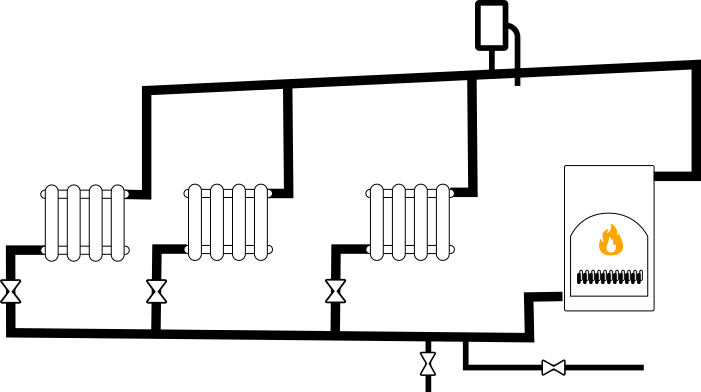
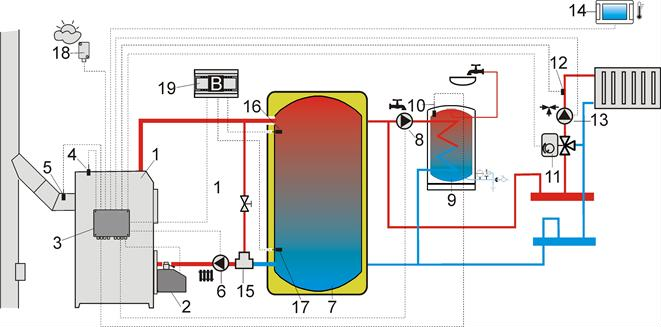
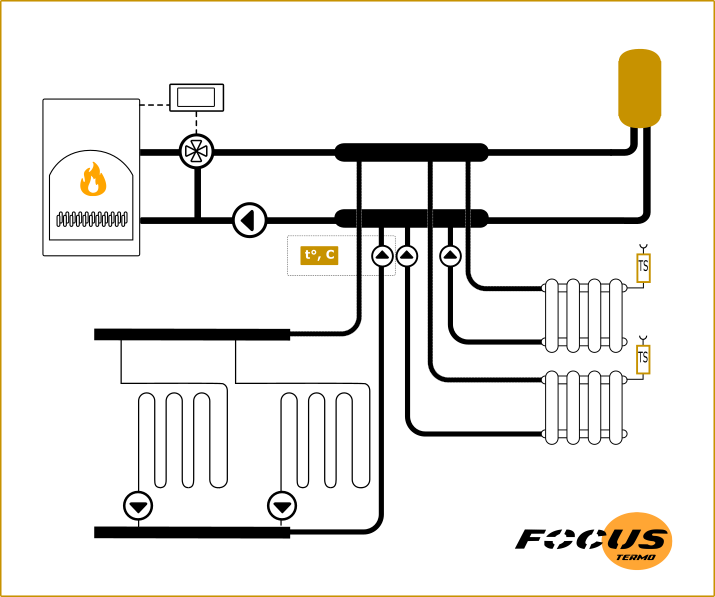
Should I install a buffer tank when piping a solid fuel boiler?
Is it necessary to install a hydraulic arrow in the piping of a solid fuel boiler?
What is important to use a solid fuel boiler to heat a private home?
A manually loaded solid fuel boiler can even be made from refractory bricks (it differs from a stove in the absence of roughness) or welded from thick-walled metal. A distinctive feature of a makeshift heating panel will be a simpler heat exchanger (see photo of the installation of the FOCUS boiler heat exchanger). This is what you need to pay attention to when choosing and purchasing a professional boiler model. In addition, it must be installed in accordance with the manufacturer's requirements and local building codes. It is important to ensure the correct connection of the boiler to the chimney and heating system, as well as install a safety group.
However, this does not solve all issues related to safe use. The safest solution is to use a buffer tank, which acts as a hydraulic arrow. That is, it thermodynamically separates the heating and boiler circuits.
After installing the boiler, it is necessary to organize the correct fuel loading. This may involve manually loading firewood or coal through the combustion chamber door, which may be vertical as in pyrolysis boilers or horizontal as in TT models. But you can also choose automatic loading of pellets or briquettes through a special mechanism, depending on the boiler model. Distinctive a feature of some versions of FOCUS boilers is the possibility of using it as a pellet or conventional solid fuel. Heating a private house with a solid fuel boiler can be a profitable and interesting option, depending on the choice of model.
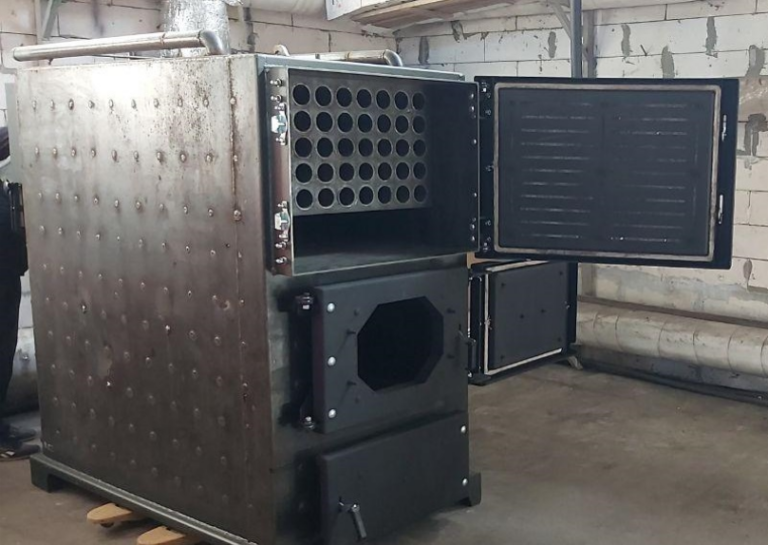 |
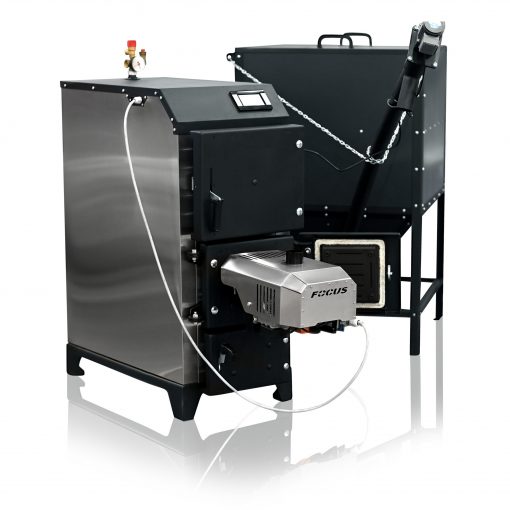 |
Boiler operation after system installation
After loading fuel, the boiler starts and can be controlled by a microcontroller (if there is a built-in or external device). This usually involves regulating the air supply to maintain optimal combustion and heating system temperature. More advanced functions supported by microcontrollers include weather regulation and climate control. Heating a private house with a solid fuel boiler can be realized by external and built-in controllers.
Regular boiler maintenance includes cleaning and servicing the chimney, checking the condition of seals and valves, and removing ash and soot from the combustion chamber. This helps maintain the boiler's efficiency and extend its life. This can be avoided if you purchase a model self-cleaning boiler, but such a purchase will be more expensive and is often only available industrial boiler house.
When using a solid fuel boiler, all precautions must be taken. This includes proper chimney installation and ventilation, preventing overheating and fuel combustion, and ensuring safe removal of ash and soot. When purchasing a finished boiler, these issues do not concern consumers; they are dealt with by the manufacturer’s designers, leaving the user with the opportunity to simply operate the boiler safely. For correct connection to the heating system, we offer FOCUS-Victaulic quick connection kits (connection to the system using groovelock couplings).
Heating a private home with a solid fuel boiler can be a reliable and effective way to provide heat, especially in those regions where access to gas or electricity is limited or the cost of resources is very high. However, it is important to carefully evaluate all aspects of the process, including fuel costs, maintenance costs and safety, before deciding to use it. This requires a properly designed heating system.
Pyrolysis (gas generator) boilers
Climate control in systems with solid fuel boiler
The temperature regulation of heated floors, air heaters and heated fields can be adjusted using pump groups to which the sensor is connected. In this case, excess heat is discharged into a buffer tank, which can be used for heating and domestic hot water. The heating intensity of radiators and heated floors is controlled using thermostats, including using a mobile application.
Heating a private home with a solid fuel boiler does not always require complex and expensive solutions. The illustration suggests a developed heating system with a high level of automation, but it can be simplified.
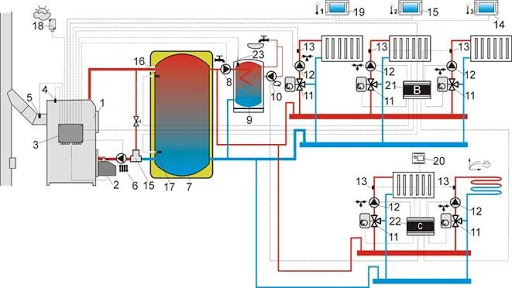
If a boiler with a pellet burner is installed, then the buffer tank is no longer needed; it is enough to make the wiring using a hydraulic arrow and manifolds. In this case, a pump group is installed on each circuit, regulating the movement of the coolant and, ultimately, the temperature of the radiators and in the rooms.
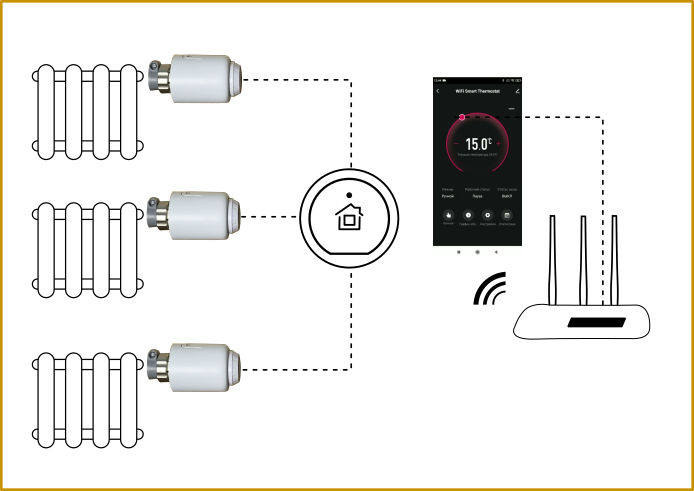
Electric boiler for heated floors
The advantages of this solution are affordable. But if you have electricity, you can connect a backup electric boiler for underfloor heating. With its help, you can maintain a low temperature during your absence and raise it when you arrive. Heating a private house with a solid fuel boiler is best implemented in combination with a backup electric boiler.







